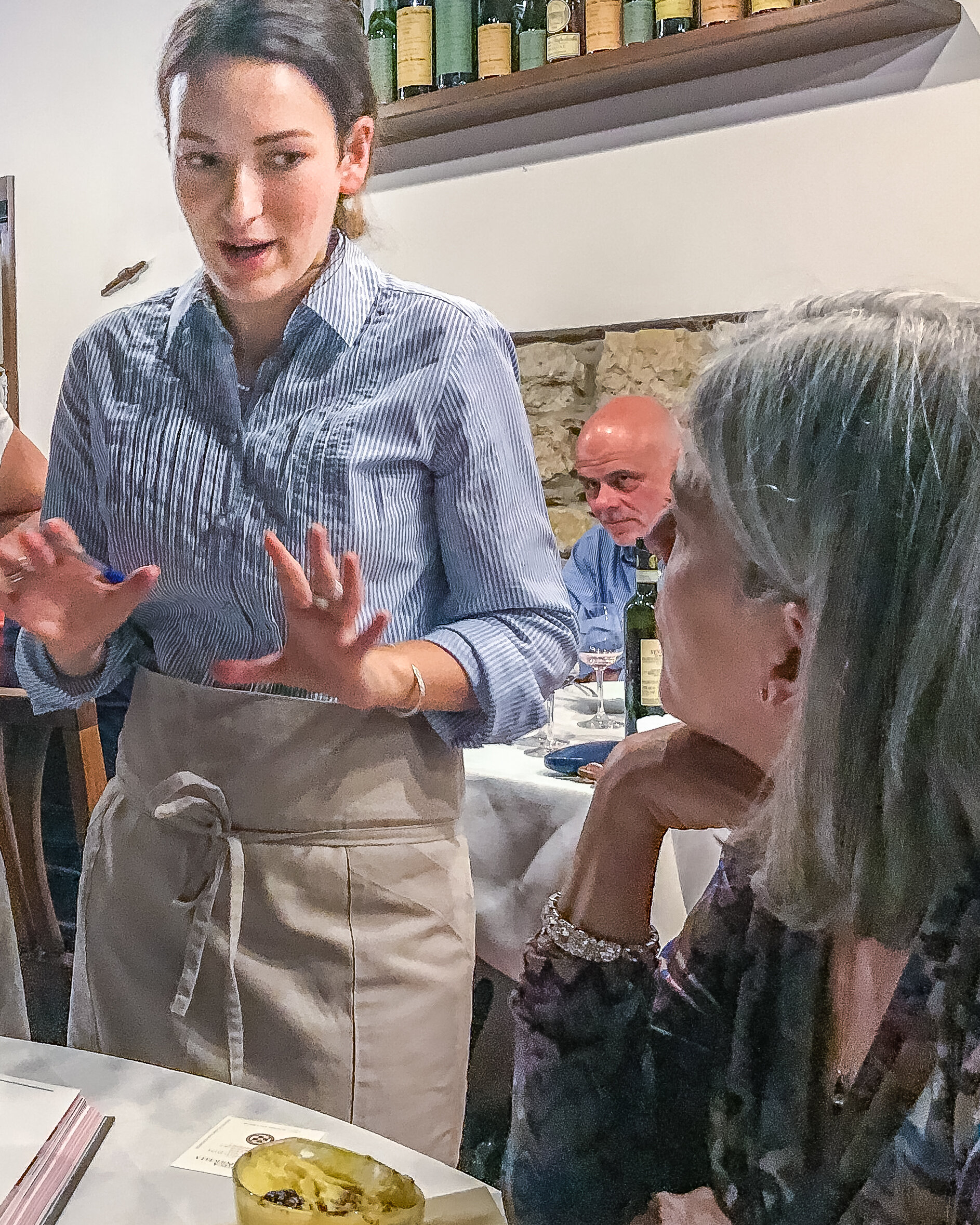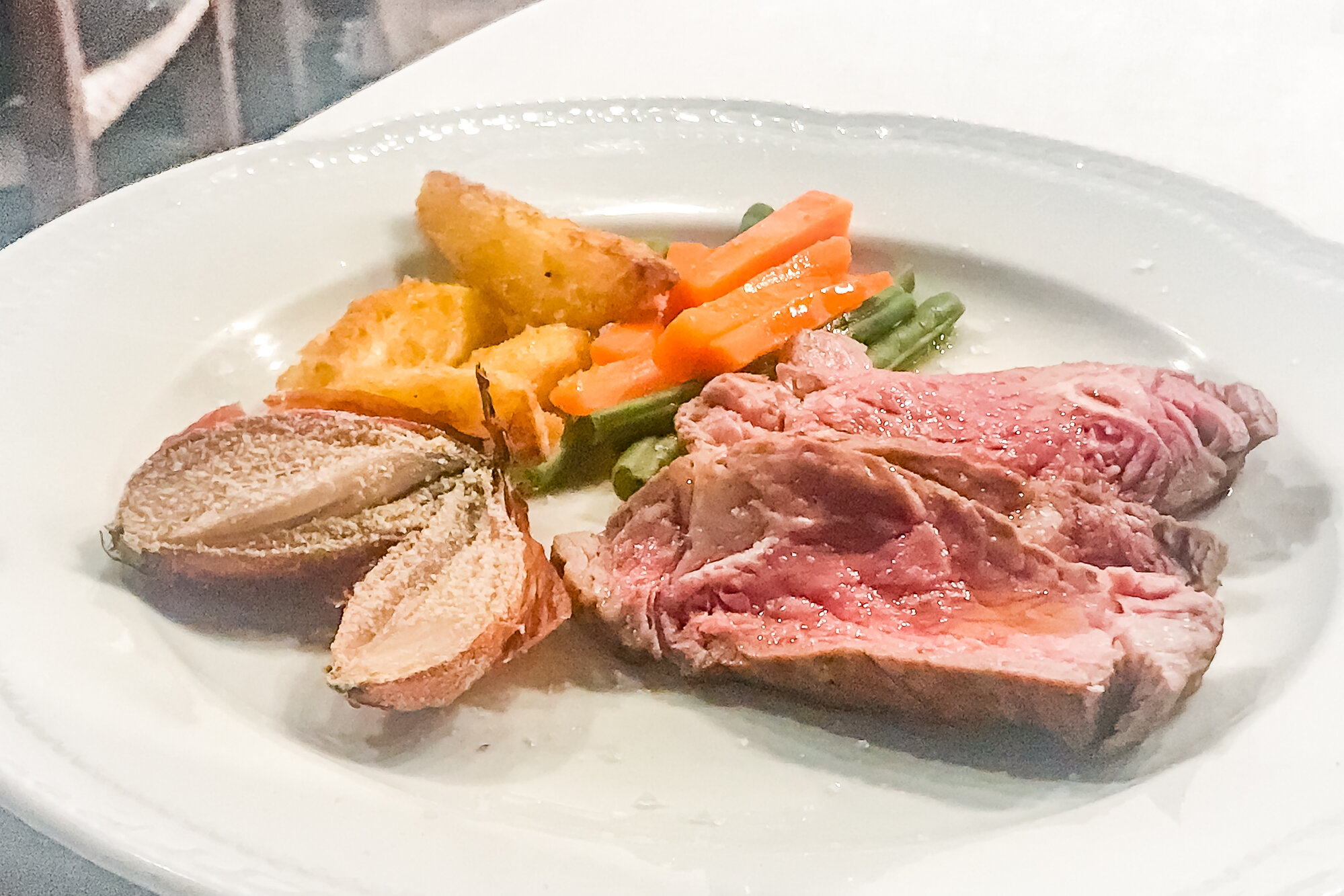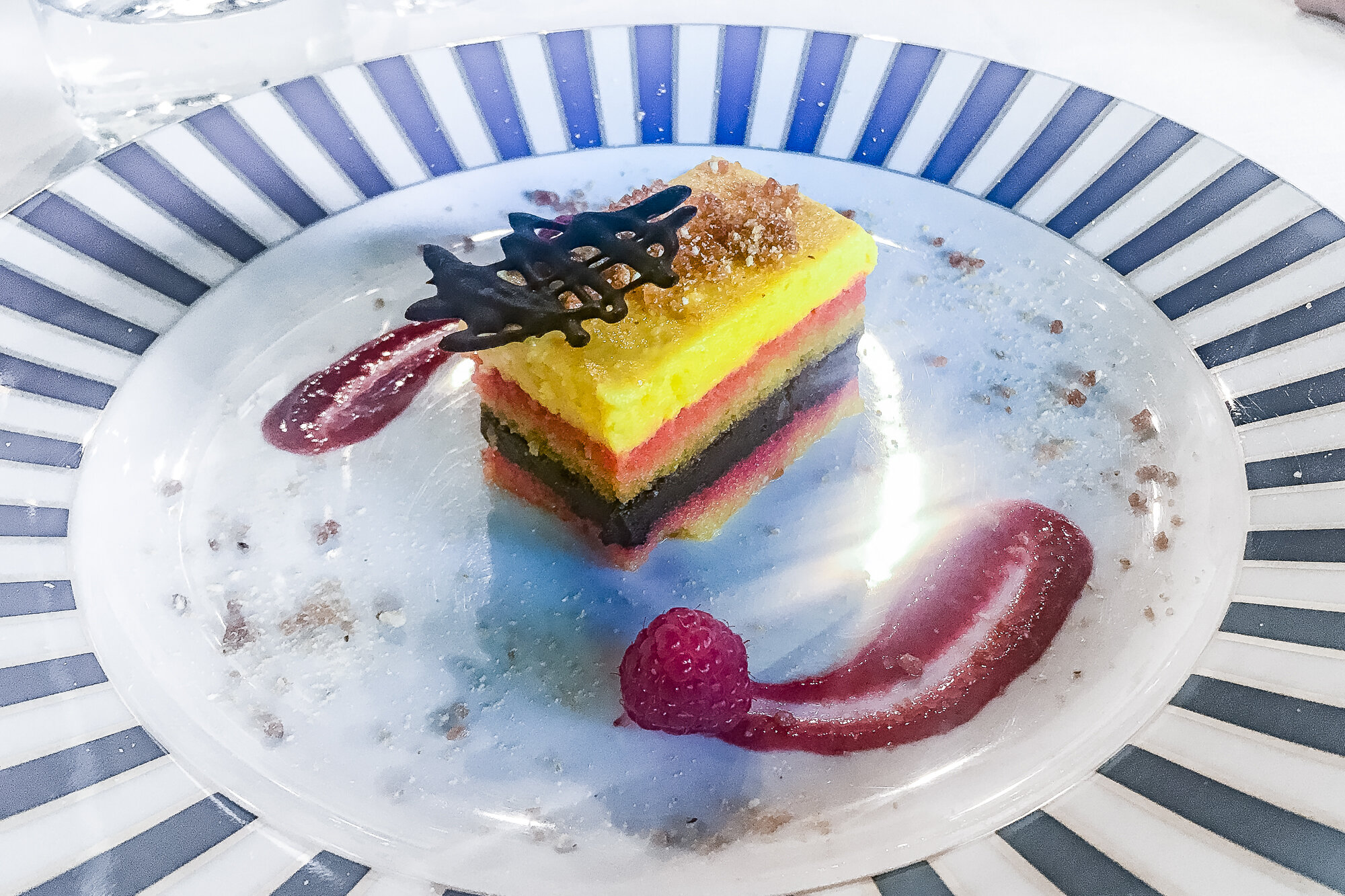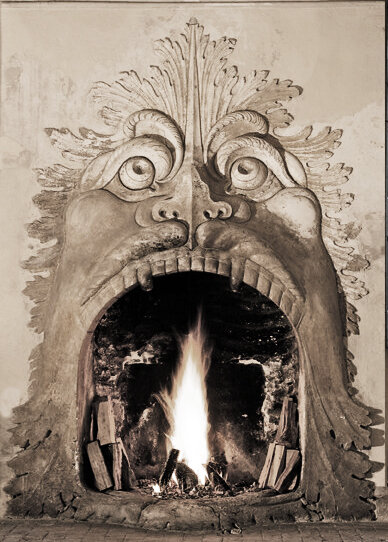Has there been a time when you’ve had a meal and you think, “Wow, I’d like to come back and eat here again!”. We said that. And, we then went back and ate there again. It was that good. Italy at its best. Here is what you can expect.
We had just completed a mourning tour and tasting of the wines of the Allegrini winery, and it was oh, so good. Now it was time for lunch. Because of a recommendation by Silvia at the Salvaterra winery, we had made a reservation for lunch at Enoteca Della Valpolicella…and we are glad we did, as the locals already know about this gem.
Getting There
On this map, you can see the short drive from Villa Allegrini (red circle) to Enoteca Della Valpolicella (blue circle) in the small village of Fumane, just 9 miles north of Verona. So, it’s possible that Juliette and Romeo had their first date here. Yeah, I know. Right?
Drive through the gate and park in the small lot.
“Whether you dine for lunch or dinner, either experience (or both, as in our case) will please you no end”
Eating There
First of all, don’t expect to be treated like a customer…you are a guest at Enoteca Della Valpolicella, and that’s the way you will feel.
Dining is upstairs, and it is a very pleasant place to eat. Add to that our very pleasant cameriera (waitress), and you have a very pleasant meal, assuming the food is also very pleasant.
Elisa Riolfi took or order, with a bit of a twist. She asked us what sort of things we liked (and didn’t like) and she then suggested that she bring us what one might call a 'chef’s menu’. We handed her our unopened menus and put our trust in Elisa.
We were glad that she approached our meal this way…because it turned out that, along with everything else, the food was very pleasant, indeed!
It turns out that Elisa has a good relationship with the chef, as Chef Ada is her mother.
I mentioned in the introduction that we returned to dine for dinner after having eaten lunch at Enoteca della Valpolicella. One of the reasons we wanted to return? This absolutely heavenly starter of Tomato Sauce alla Veronese.
It is finished with a bit of burrata cheese, basil, and a splash of EVOO.
And, for our dinner, once more we let Elisa and her mom take the reigns, but with one demand —- we wanted this starter with our meal, once again!
In this photo, you can see the texture of this scrumptious delight.
In testament to just how good this simple dish is, Ellen’s action speaks for itself! This gives new meaning to ‘diving in’ to a dish!
Ellen says, “It is remarkable that something so simple should be so flavorful!”.
And it is super simple. There are only three ingredients, and one of them is butter!
We know how to duplicate this dish. Click this thumbnail and you can see for yourself.
Wine with Our Meals
As with virtually every meal we eat in Italy, wine is always appropriate.
For lunch, we opted for a bottle of La Grola from the Allegrini winery which we had just visited that morning.
For dinner, it was a nice Amarone. This wine is the one that is made from grapes that have been raisinated for about 100 days before being pressed, described in the article here.
They have over 800 labels in their cellar. And they know each one…as well as the families that produce them. Just ask, and you will receive a wine that you will enjoy with your meal.
Whatever the meal, there is always a toast to Italy and friends not present — and that includes you, of course!
Ellen and Steve (in photo) along with Leslie and Craig, offer a toast
Here are the chef’s selections for our lunch and dinner. And it is oh, so good to know that bacon is often a part of a meal in Italy! That particular dish is Dandelion Leaves with Monte Veronese Cheese and Crispy Pancetta (which you will find on page 47 of the yet to be mentioned cookbook, below).
See the third dish in the top row? That is Duck Breast with Recioto & Honey Sauce…and it was absolutely fabulous.
Recioto is a sweet, red dessert wine made in the Valpolicella Amarone style. By putting the Recioto together with the honey, a delicious sweet, but not overpowering, accompaniment is created for the duck breast.
Here is the recipe so you can try it at home. Just click on the thumbnail to get a larger view.
Dessert? Yes please. And thank you!
A Visit from Chef Ada Riolfi
During our trip, we had found a cookbook that we really liked, as it had dishes that were the specialty of Italian chefs of the Lake Garda, Verona, and Valpolicella area - the area which we were visiting.
The cookbook is titled, “Polenta & Amarone: The Flavors of Lake Garda, Verona and Valpolicella”. It so happens that Chef Ada is featured in this cookbook with 7 of her recipes. As we happened to have our own copy with us, we had Ada autograph our book. Surely you too have a cookbook with you as you travel. I certainly hope so!
Elisa and her chef-madre, Ada
It is interesting that Ada had not seen the cookbook before tonight, as it was not of her creation. And, upon taking a look at some of her recipes therein, she spotted errors in cooking temperature and time.
Here she is as she signs our cookbook, after penciling in changes to the Duck Breast with Honey and Recioto Sauce recipe. She changed the ‘brisk heat’ of the Recioto sauce to ‘low flame’, and the time of ‘15-20 minutes’ to ‘40 minutes’. It’s nice to have a chef handy whilst you’re cooking, so we will try to do that for our future at-home cooking sessions! We’ve already scheduled Keller, Douglas, Flay, Giada, and more!
Chef Ada, autographing our copy after making corrections to the cookbook
Four women of whom bother-in-law Craig and I are in awe
The Cookbook
If you are interested in obtaining a copy of the cookbook (without Chef Ada edits…unless you make a personal visit to Enoteca della Valpolicella, of course), click here.
Just be sure to select the Italiano-English version (rather than the Italiano-German version). Each recipe is given in both Italian and English.
By the way, the woman on the cover is Pierina Caprini. Though we know her, you probably don’t…but you will soon when i publish an article featuring her restaurant and cooking. So, stay tuned for that…it was one of the most truly magical evenings of our lives.
That’s it for our back-to-back visits to Enoteca della Valpolicella. Both lunch and dinner were fabulous.
Want to give Enoteca Della Valpolicella a try for yourself, To the right is their contact information.
And here is a direct link to their website, where you can make a reservation…which is a must. Click on the British flag to get an English version and/or let Google translate for you. Click on the word ‘Reserve’ and fill out the form to make your reservation.
Whether you dine for lunch or dinner, either experience (or both, as in our case) will please you no end. If a bottle of un-ordered Amarone shows up at your table, make no fuss…just turn to the table near the window to see Ellen and me giving you a thumbs up of affection…that bottle is on us.
Ciao for now,
Steve
<<< Sign Up to be Placed on the Italy, Our Italy Mailing List>>>





































